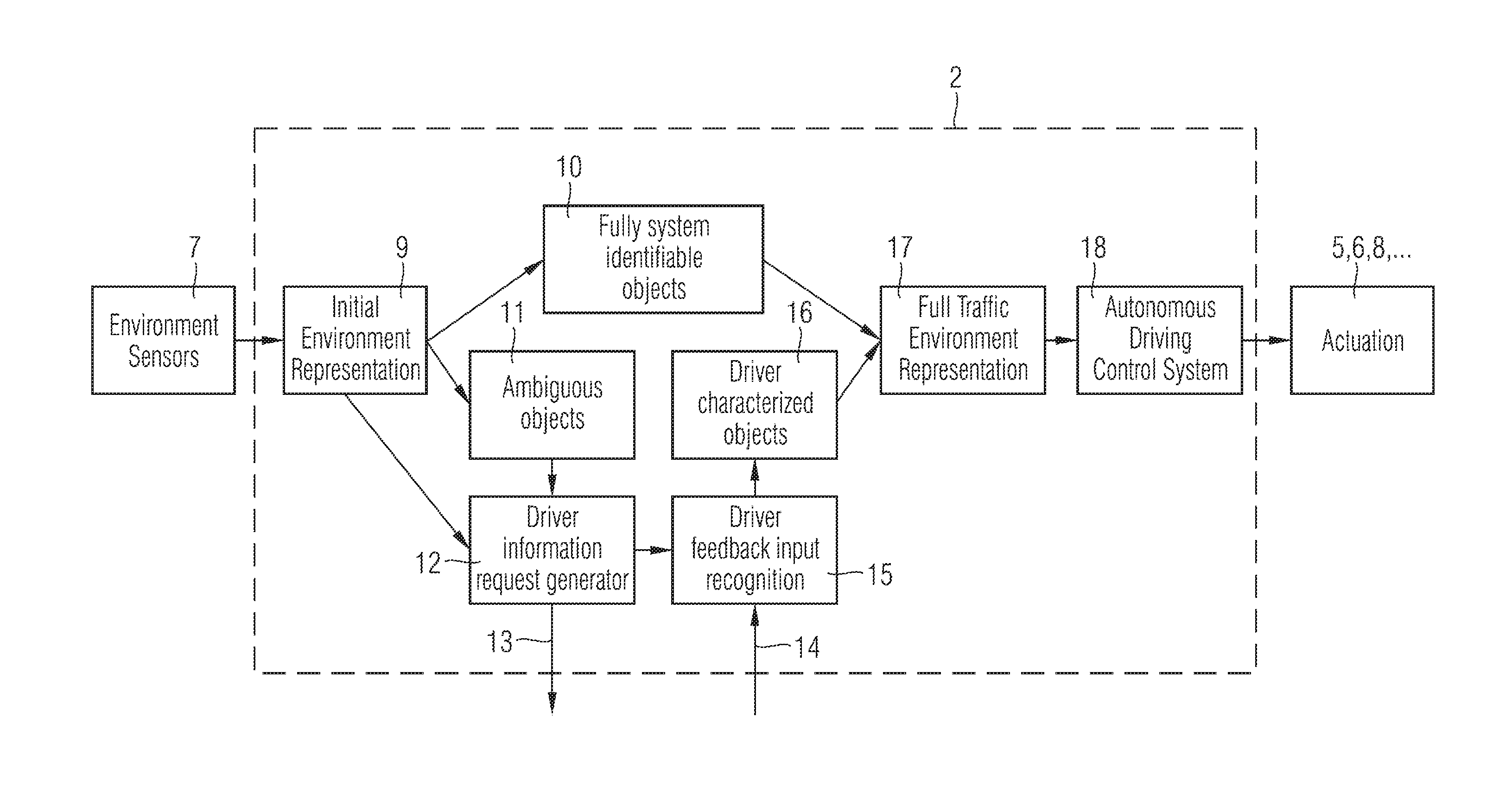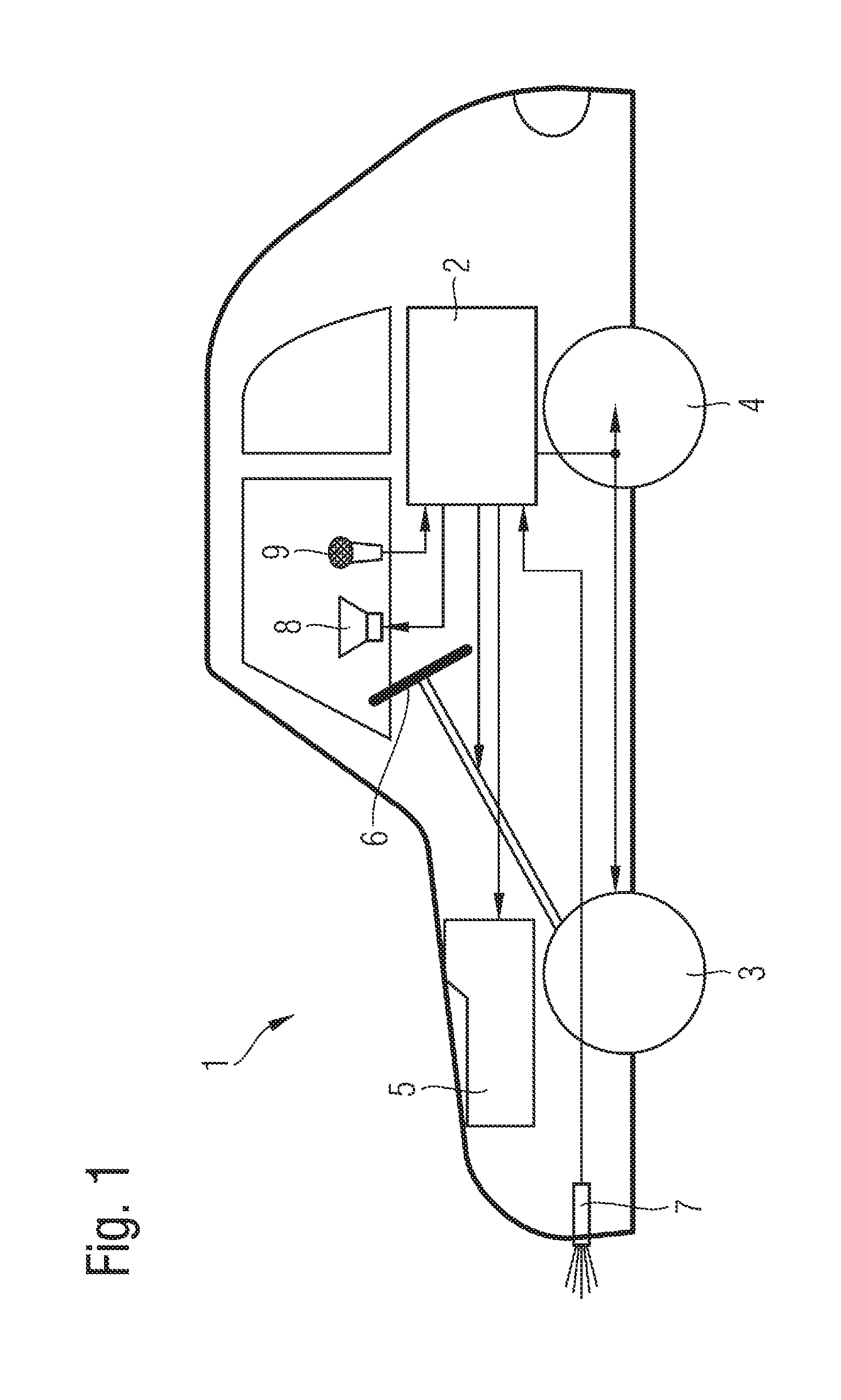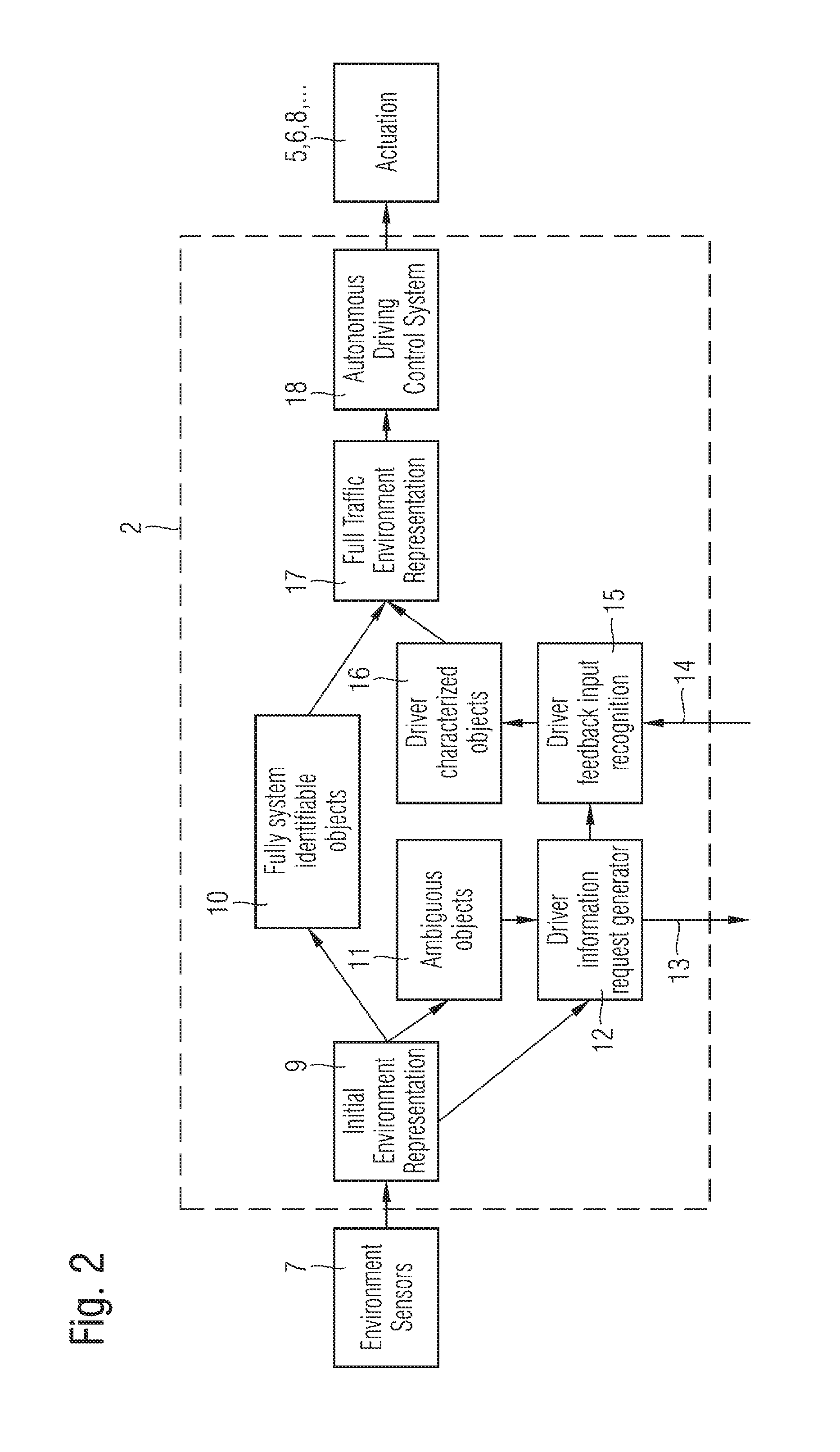System for autonomously or partially autonomously driving a vehicle with communication module for obtaining additional information from a vehicle driver and corresponding method
a communication module and vehicle technology, applied in the direction of automatic control systems, input parameters of drivers, external condition input parameters, etc., can solve the problems of system insufficient reliability, inability to decide with sufficient reliability on an action that needs to be taken, and the challenge of driving a vehicle has always been a challenging task. , to achieve the effect of avoiding ambiguities, high awareness of the situation, and communication efficiency
- Summary
- Abstract
- Description
- Claims
- Application Information
AI Technical Summary
Benefits of technology
Problems solved by technology
Method used
Image
Examples
Embodiment Construction
[0022]In FIG. 1 there is shown the basic configuration of the vehicle 1 that is capable of the autonomously or partially autonomously driving according to the present invention. The vehicle 1 comprises a central processing unit 2 responsible for evaluation, and processing of information that is input to the central processing unit 2 and for generating control commands in order to autonomously drive vehicle 1. The autonomous vehicle 1 in the illustrated embodiment is a car with steerable front wheels 3 and driven rear wheels 4. Of course the inventive system is also applicable to any kind of vehicle and thus is not limited to the car as shown in FIG. 1.
[0023]The autonomous vehicle 1 is driven by an engine 5 which is connected to the rear wheels 4 and generates a driving force. The direction of the vehicle 1 is controlled by a steering system including a steering wheel 6.
[0024]In order to execute the autonomous driving function or at least parts of autonomous driving, since fully auto...
PUM
 Login to View More
Login to View More Abstract
Description
Claims
Application Information
 Login to View More
Login to View More - R&D
- Intellectual Property
- Life Sciences
- Materials
- Tech Scout
- Unparalleled Data Quality
- Higher Quality Content
- 60% Fewer Hallucinations
Browse by: Latest US Patents, China's latest patents, Technical Efficacy Thesaurus, Application Domain, Technology Topic, Popular Technical Reports.
© 2025 PatSnap. All rights reserved.Legal|Privacy policy|Modern Slavery Act Transparency Statement|Sitemap|About US| Contact US: help@patsnap.com



